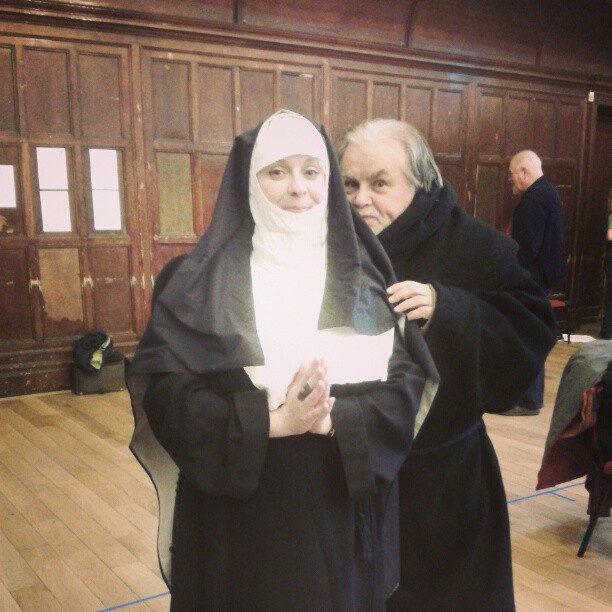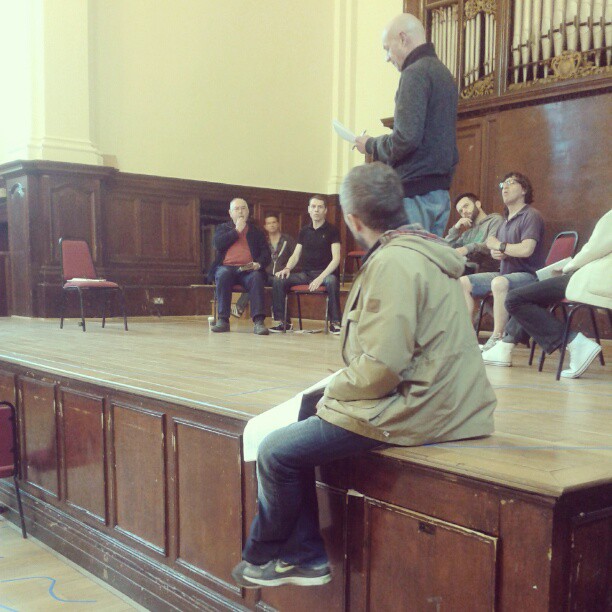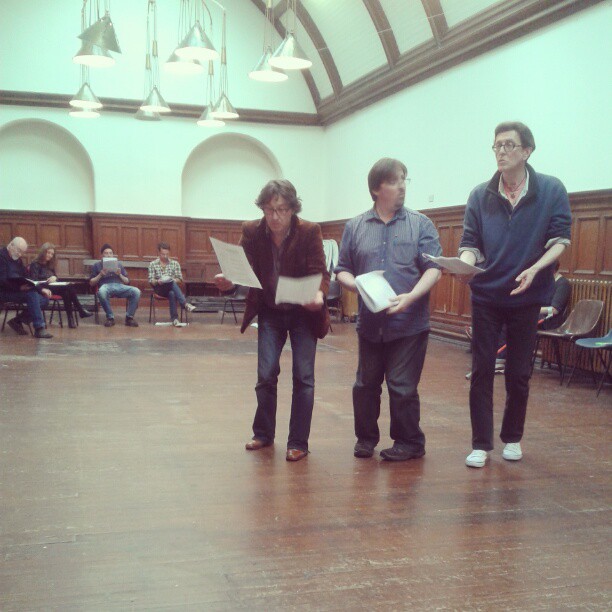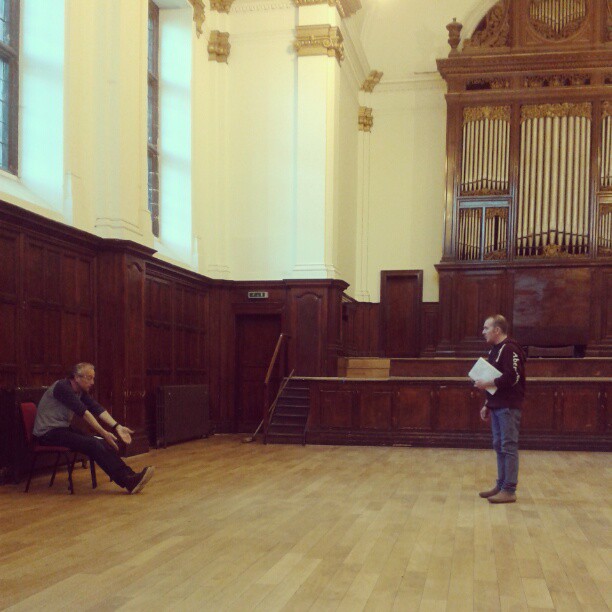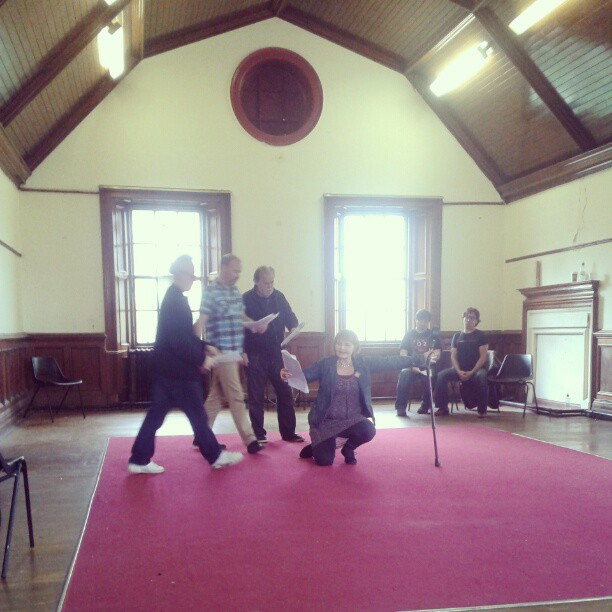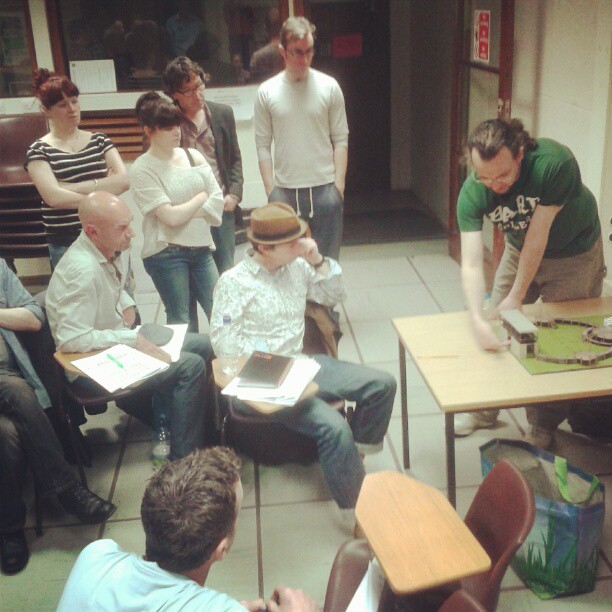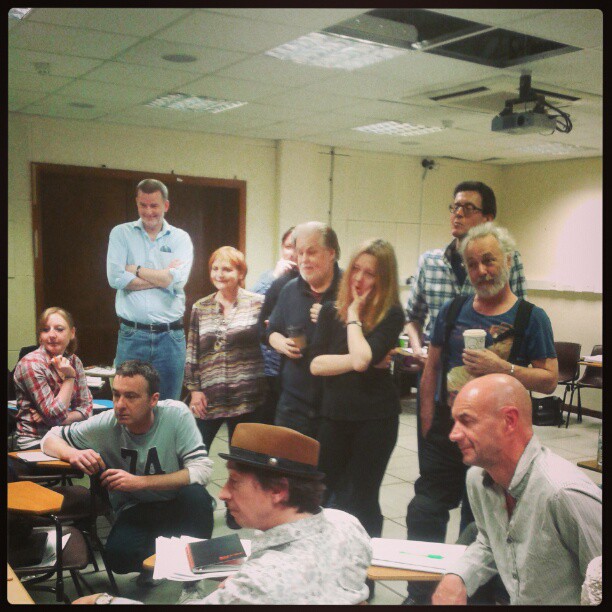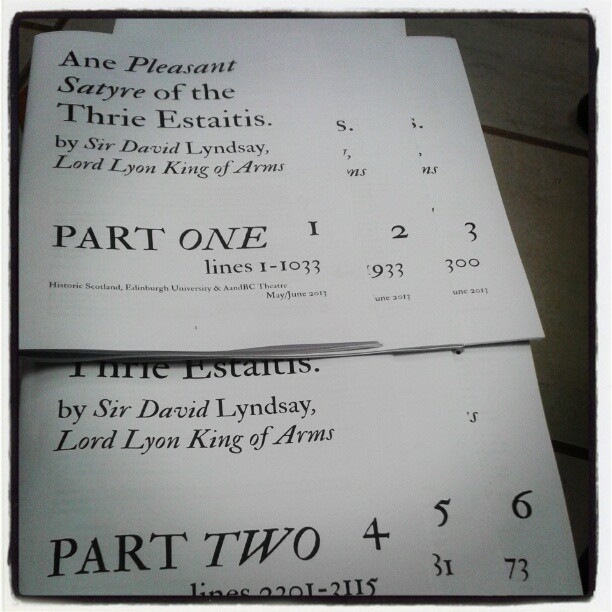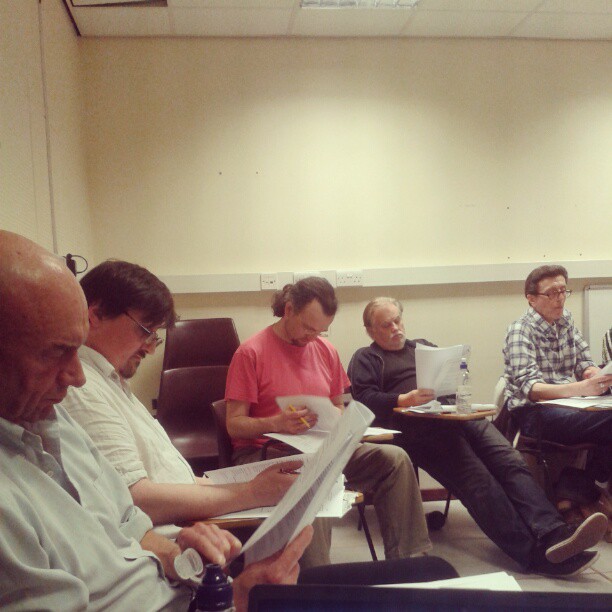The morning began with rehearsal of the hanging again, a very technical part of the play. Jimmy Chisholm and Barrie Hunter were making marvellous sense of their long and complex gallows speeches.  Thereâs an interesting shift from iambic tetrameter to iambic pentameter in Falsetâs final speech, which registers a shift in tone from a denouncement of the local craftsmen to rulers, prelates, judges in general â but also wives dwell amongst this illustrious company?!
Before lunch, we re-rehearsed the Folly/Rex/Diligence ending of the play. This is very much a three-way dynamic which speaks of a particular triad of courtly life in the play, and perhaps the personal vision of Lyndsay. Diligence, the assiduous herald who is widely seen as a Lyndsay figure, mediates the passage of Folly to the King â does this tell us something about the playwright himself? I was reminded of Jamie Reid-Baxter saying that Diligence and Folly are refractions of Lyndsayâs own character.
In the afternoon, there was a real festival atmosphere as 30-odd âjesters, jugglers and bauble-bearersâ prepared to run Part One of the play. It was fascinating to see the skilful dramaturgy of Lyndsay in the first half take shape. Enough time is spent setting up the Kingâs fall that Good Counsel appears at the opportune moment to cast a virtuous perspective on the events. And just as her voice of sense is registered, the level of Vice is ramped up by the entry of Flattery, Falset and Dissait. The middle part of the first half marks the nadir of Rexâs reig; his enthrallment to Sensuality, his employment of evil personnel, and rejection of Good Counsel. Verityâs entrance is the fulcrum from which point the reformation of the king is anticipated, although it his transgression is also heightened by the introduction of notions of religious truth and sin rather than simply the political and social evils of the first half. We are then led via Verity and Chastity to the ultimate appearance of Divine Correction and the restoration of good order at Rexâs court. It is a beautifully crafted piece of drama and only through performance can this craftsmanship be appreciated.
We tried putting the âInterval playâ directly after Part One and it heightened the sense that the dramatic space has been invaded by the Pauper, as both actors and audience have slipped out of âtheatrical modeâ, and had to quickly slip back in.  I wondered whether this was the order of the drama envisaged by Lyndsay as, dramaturgically, he is fascinated with the notion of the false sending. This idea governs the overall structure of the Satyre. Part One finishes in the mode of a traditional morality play, but the finality of this genre is significantly challenged by the parliament drama of Part Two. The interval play is a further, third piece of drama incorporated into the overall play and the Pardonerâs âNow tarry any little, I pray you,/ Till I with you be knownâ â does seem to be designed to further delay an audience itching to get away for the drink Diligence has just suggested. If the interval play was supposed to follow directly on from Part One, this raises an interesting question â is this the âbest pairt of the playâ that Diligence has just promised? With the Pauperâs tale of woe, the arse-kissing divorce, and the interchanges of the Pardoner with other characters â it is certainly one of the funniest.





